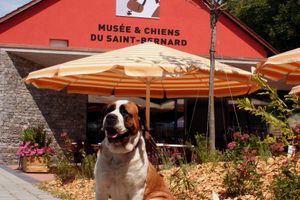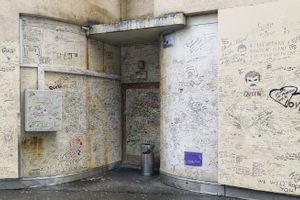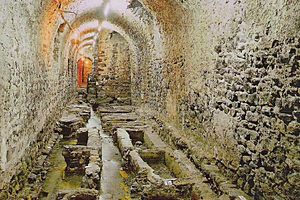About
Roman Agaunum, or present day St. Maurice, hides a sordid past beneath its sleepy, quaint patina.
During the 3rd century, Roman authority in Agaunum demanded reverence for the divinity of the Holy Roman Emperor as a God. The Theban Legion, commanded by Saint Maurice, had converted to Christianity and refused to fight other Christians. According to legend, Emperor Maximillian ordered the legion to death by decimation as punishment, in which one out of ten was beaten to death by his fellow comrades. Upon further resistance, the Emperor ordered another decimation. Still unsuccessful, he had the rest of the legion slaughtered. Today the town and Abbey bear the martyr St. Maurice's name in testament.
On September 22, 515, the Burgundian King St. Sigismond founded the Abbey on the Roman burial site and opened the "Laus Perennis" - The Perpetual Praise - on the tomb of the martyrs. Chants were performed endlessly day and night by several choirs who sang in shifts. This custom prevailed until the early ninth century.
Agaunum became famous for this custom and its martyrs, and its abbey had some of the richest and best preserved relics in the West. Eugene Cox describes in his story "The Green Count" the discovery of St. Sigismond's remains in 1365 by Holy Roman Emperor Charles IV:
"The abbot and monks of St. Maurice received their visitor with pleasure but declared themselves confounded when he asked to see the tomb of the holy Sigismond. 'Seigneurs,' replied the abbot, 'the church we know well but are ignorant of the location of the sepulchre.' Undaunted, Charles asked to see the chapel in which the tomb was supposed to have been.... Then the emperor 'brought out an ancient chronicle which contained the life of St. Sigismond and the story of how he had been buried and walled up in an underground chapel.' Charles told them where to dig and they had hardly begun when part of the wall fell away, revealing a cave containing the remains of St. Sigismond.... The monks were astonished and delighted and began to sing hymns and praises to God. The emperor, equally pleased, claimed as his reward the venerable skull for his relic collection...."
In the early 17th century an avalanche destroyed the original abbey, and for fear of a similar fate another church was erected set away from the cliff where the original stood. Today it is possible to see the catacombs still intact, and the newer church built next to them. In the apse of the original church, the tomb of Saint Maurice remains with a small alter erected in his honor.
Excavation began in 1945, but the ruins of the church and the catacombs remain an archeological site to this day.
Related Tags
Community Contributors
Added By
Published
September 27, 2010























